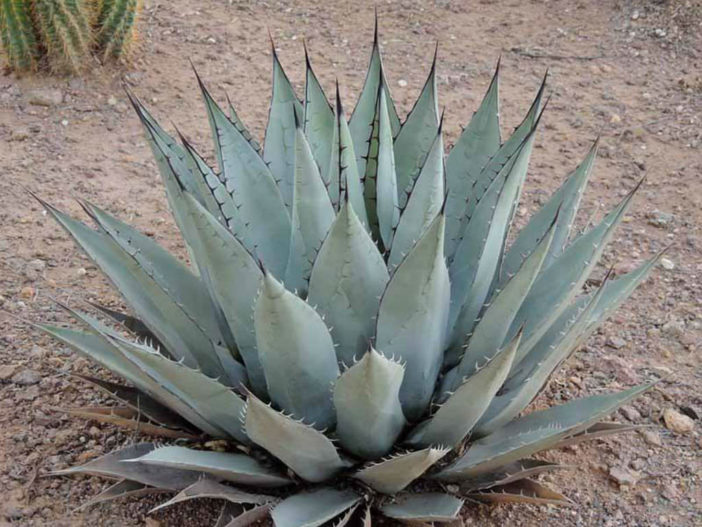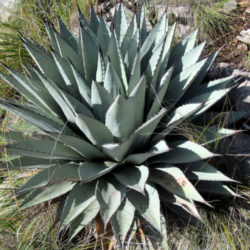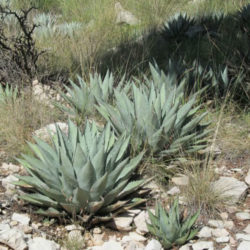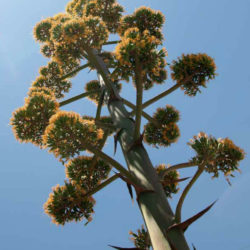Scientific Name
Agave parryi subsp. neomexicana (Wooton & Standl.) B.Ullrich
Common Name(s)
New Mexico Agave, New Mexico Century Plant, Trailer Park Mescal
Synonym(s)
Agave neomexicana
Scientific Classification
Family: Asparagaceae
Subfamily: Agavoideae
Genus: Agave
Description
Agave parryi subsp. neomexicana is an ornamental succulent that forms rosettes of ascending, lance-shaped, gray-green leaves with sharp teeth along the margins and a dark brown terminal spine. The rosettes grow up to 1.5 feet (45 cm) tall and 2 feet (60 cm) in diameter, usually accompanied by offsets around the base. Leaves are up to 1.5 feet (45 cm) long and 2.4 inches (6 cm) wide. This subspecies has slightly thinner, shorter leaves than Agave parryi subsp. parryi. Also, it has more open rosettes, larger flowers, and a greener, less glaucous coloration.
The mature rosettes, 8 to 20 years, send up an up to 10 feet (3 m) tall spike adorned with tufts of flowers on many lateral branches, usually in summer. The flowers are yellow to yellowish-green and red to orange in bud. Fruits are oblong, up to 1.4 inches (3.5 cm) long capsules with black seeds. The rosettes die after setting fruits.
Origin
The native range of Agave parryi subsp. neomexicana is from southeastern New Mexico and western Texas in the United States into Coahuila and Chihuahua in Mexico.

Hardiness
USDA hardiness zone 5a to 10a: from −20 °F (−28.9 °C) to 35 °F (+1.7 °C).
How to Grow and Care
Agaves are not difficult plants to grow. They are slow-growing and dramatic and will even thrive on a bit of neglect. If you're the type of person who likes to fuss with houseplants and water a lot, Agave is probably not the plant for you. If, however, you're the type of person who likes to set it and forget it, and you have a sunny window, Agave might be the way to go. Be aware that some large varieties will eventually outgrow your room (unless you have a large greenhouse), and Agave can be aggressive. They have irritating sap and sometimes very sharp thorns that can cause injuries to small children and even pets.
In general, Agaves do not need to be repotted every year. Mohe species commonly found in cultivation grow very slowly and take a long to outgrow their pot. It's also best to handle your Agave as little as possible since they do not like to be disturbed.
See more at How to Grow and Care for Agave.
Links
- Back to genus Agave
- Succupedia: Browse succulents by Scientific Name, Common Name, Genus, Family, USDA Hardiness Zone, Origin, or cacti by Genus
Photo Gallery
Click on a photo to see a larger version.


